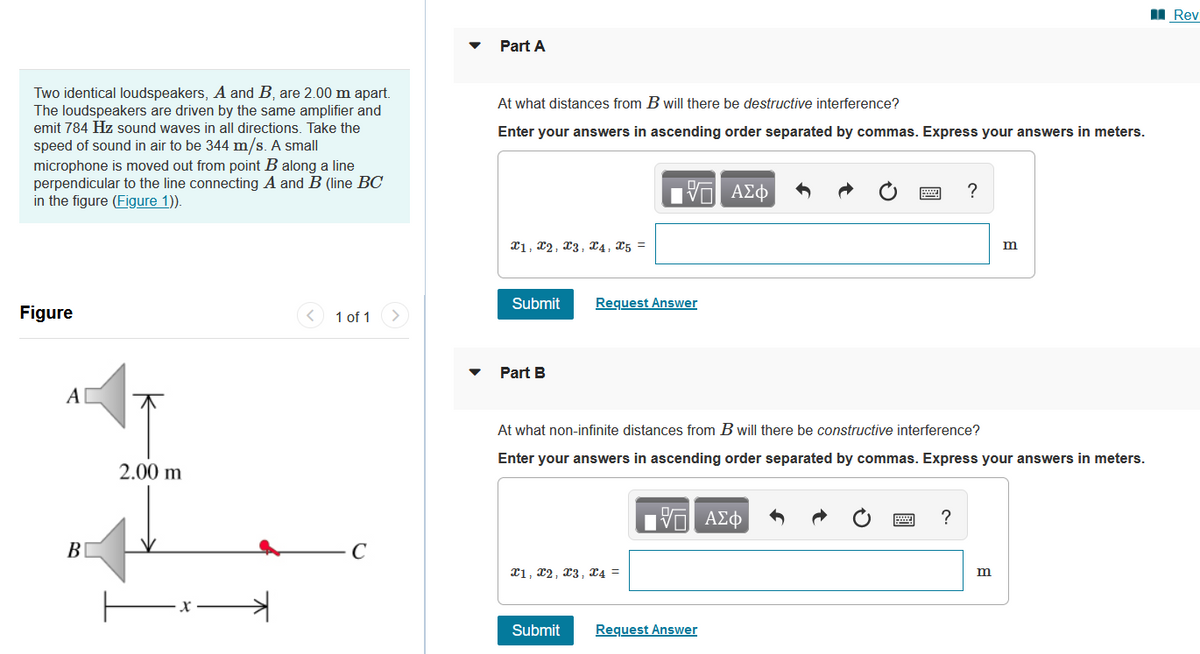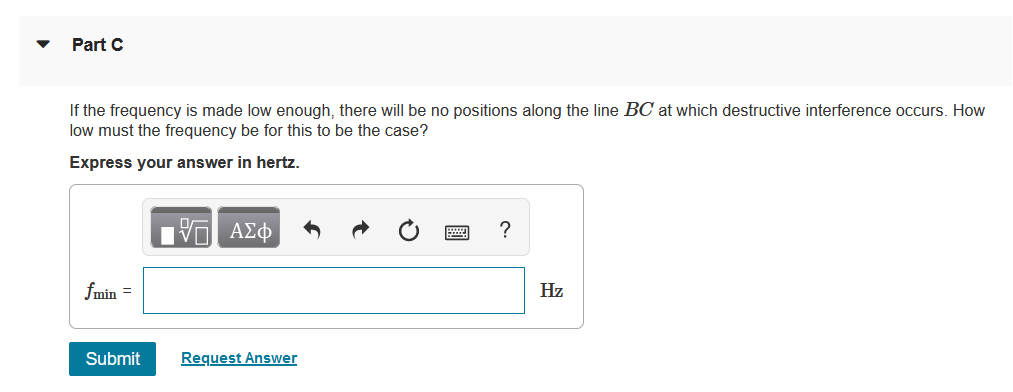wo identical loudspeakers, A and B, are 2.00 m apart. The loudspeakers are driven by the same amplifier and mit 784 Hz sound waves in all directions. Take the speed of sound in air to be 344 m/s. A small nicrophone is moved out from point B along a line perpendicular to the line connecting A and B (line BC n the figure (Figure 1)). gure Al B ㅈ 2.00 m < 1 of 1 C
wo identical loudspeakers, A and B, are 2.00 m apart. The loudspeakers are driven by the same amplifier and mit 784 Hz sound waves in all directions. Take the speed of sound in air to be 344 m/s. A small nicrophone is moved out from point B along a line perpendicular to the line connecting A and B (line BC n the figure (Figure 1)). gure Al B ㅈ 2.00 m < 1 of 1 C
Related questions
Question

Transcribed Image Text:Two identical loudspeakers, A and B, are 2.00 m apart.
The loudspeakers are driven by the same amplifier and
emit 784 Hz sound waves in all directions. Take the
speed of sound in air to be 344 m/s. A small
microphone is moved out from point B along a line
perpendicular to the line connecting A and B (line BC
in the figure (Figure 1)).
Figure
A
B
2.00 m
1 of 1
Part A
At what distances from B will there be destructive interference?
Enter your answers in ascending order separated by commas. Express your answers in meters.
X1, X2, X3, X4, X5 =
Submit
Part B
17| ΑΣΦ
Request Answer
x1, x2, x3, x4 =
Submit
At what non-infinite distances from B will there be constructive interference?
Enter your answers in ascending order separated by commas. Express your answers in meters.
17 ΑΣΦ
Request Answer
?
?
m
m
Rev

Transcribed Image Text:▼
Part C
If the frequency is made low enough, there will be no positions along the line BC at which destructive interference occurs. How
low must the frequency be for this to be the case?
Express your answer in hertz.
fmin =
Submit
—| ΑΣΦ
V
Request Answer
?
Hz
Expert Solution
This question has been solved!
Explore an expertly crafted, step-by-step solution for a thorough understanding of key concepts.
This is a popular solution!
Trending now
This is a popular solution!
Step by step
Solved in 4 steps
